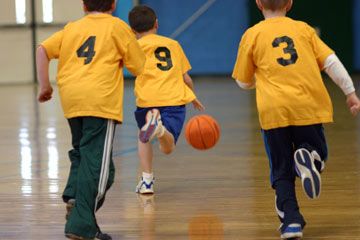Previously restricted to iced-over ponds in tundra-like lands, hockey has quickly become a popular sport for many people, particularly youth. But even if you've played ice hockey before, when it comes to coaching a group of kids, you may feel like Emilio Estevez's character Gordon Bombay in "The Mighty Ducks" -- completely out of your element.
Before you get into the nitty-gritty of hockey skills, positions and equipment, decide on some basic coaching strategies and how you want to work on them with your team. Build team camaraderie by talking with your players in the locker room before games and then warming up on the ice together. Review good sportsmanship with your athletes and be sure they have an understanding of why it's important to respect their opponents. Also, review strategies and plans for the game with your players, but be prepared to change these depending on how the game unfolds [source: Lifetime Hockey].
Advertisement
Once you've laid a foundation for your team's strategies and goals, you can move on to coaching your players on the skills and rules of hockey. Hockey is a complex game, and your athletes will need to develop a variety of separate skills to play well. These include skating, handling the puck and using the hockey stick. Hockey can also be a high-contact, intensely physical game -- in some leagues, players check, or ram into one another, in order to gain control of the puck [source: Cunningham]. However, rules for youth leagues may vary for safety precautions, so be sure your players are aware of what is and isn't allowed.
While many hockey skills apply to all players, keep in mind that strategies can vary between offensive and defensive players. No matter the position, every hockey player's goal is to move the puck into the opposing team's net. However, the way each individual player contributes to this may vary.
The objective to score in hockey may seem simple, but some rules and infractions are more complicated. Keep reading to learn the basic rules of hockey.
Advertisement


